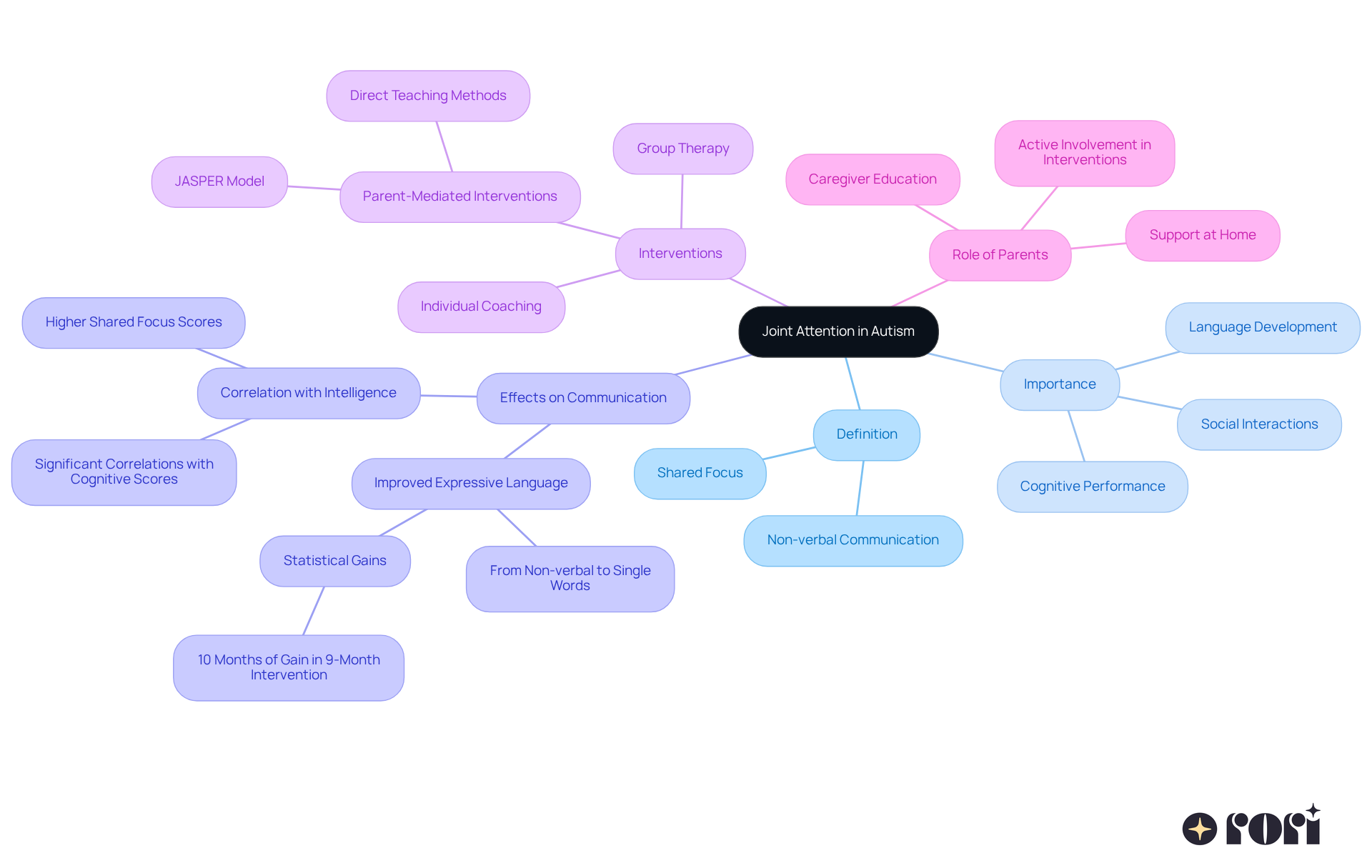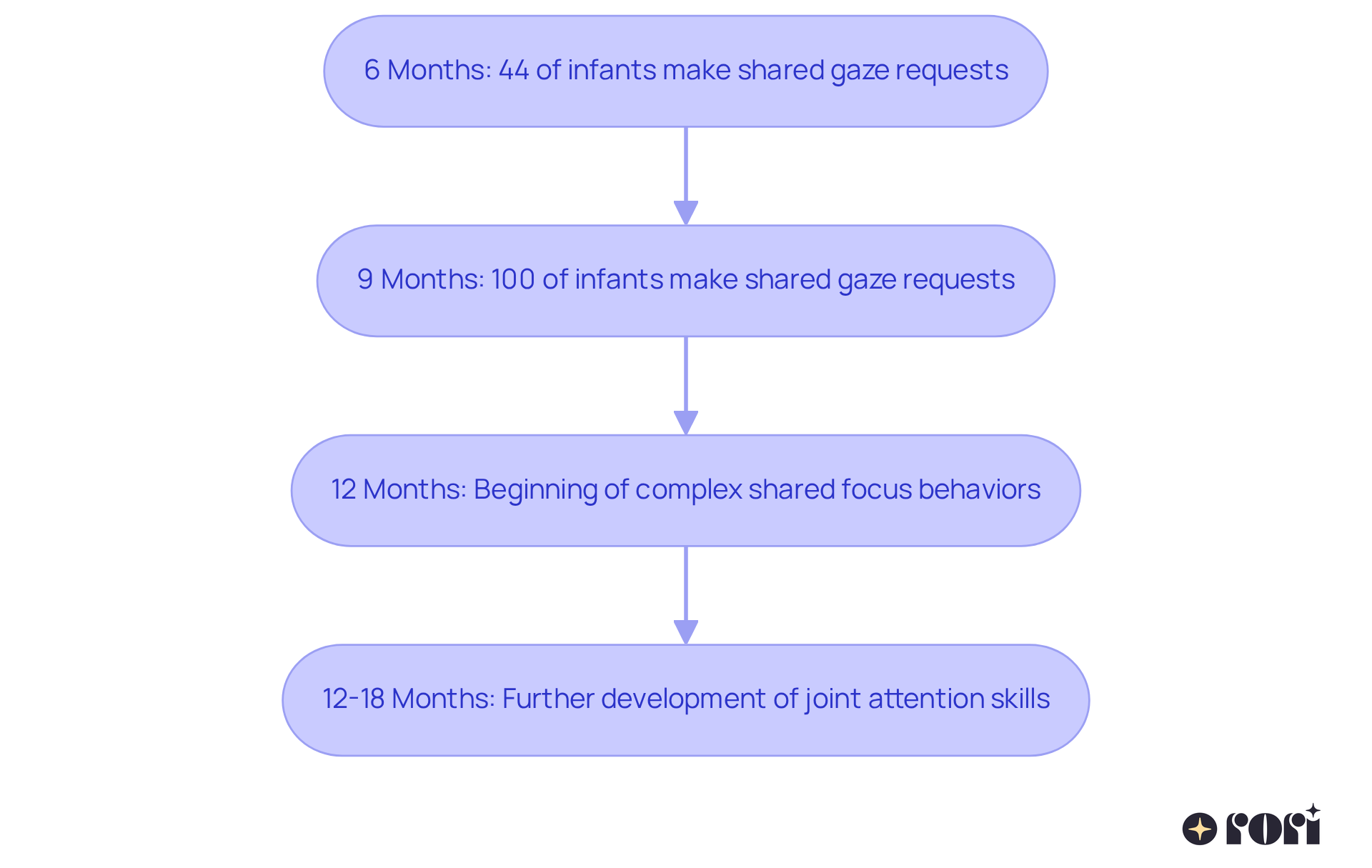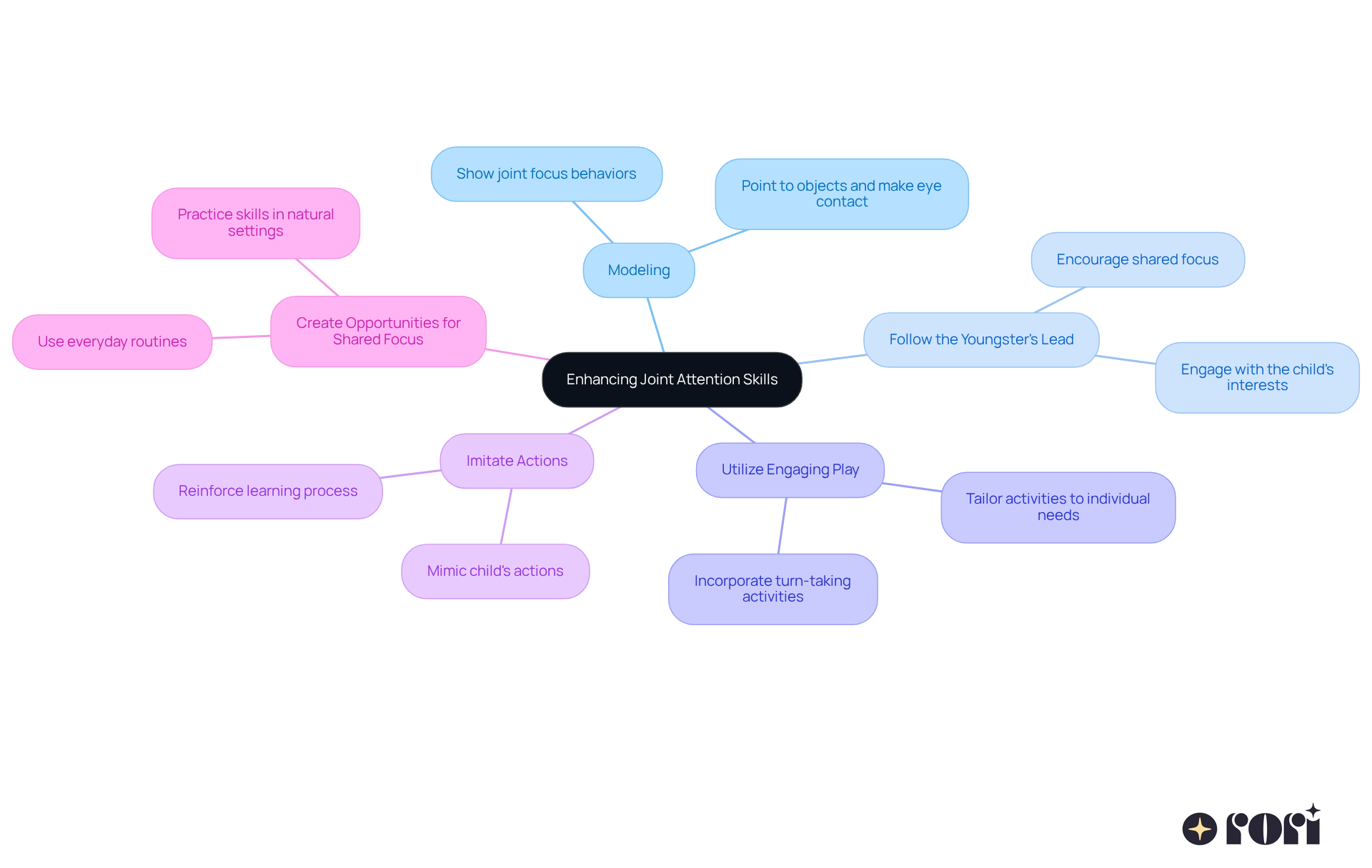Building joint attention is such an important skill, especially for our little ones with autism. It’s all about sharing focus on something - like a toy or a fun event - and it really helps with language development and forming deeper connections with the world around them. But let’s be honest, many parents and caregivers find it tough to nurture this skill effectively.
So, what can we do to bridge that gap and encourage meaningful engagement? There are some great strategies out there! By exploring effective techniques and interventions, we can shine a light on ways to improve joint attention. This can open up a world of richer social experiences for our kids. Let’s explore this together!
Joint awareness is all about two people sharing their focus on something - like an object or an event - through gestures, eye contact, or even a few words. This skill is super important for social interactions, especially for kids, as it helps them join in on shared experiences and learn from what’s around them. For children with autism, building joint attention abilities is crucial, as trouble with this shared focus can really hold back their language development and social connections.
Recent studies have shown that building joint attention abilities in children with autism can lead to some amazing progress in communication and social skills. For instance, kids with autism who get targeted help in this area often show better expressive language abilities. Some even move from not speaking at all to using single words or phrases! Plus, there’s a link between shared focus and cognitive performance - higher shared focus scores often mean better intelligence metrics.
With all this in mind, focusing on building joint attention abilities in children with autism is crucial for effective autism care. It sets the stage for effective social communication and overall growth. At Rori Care, our dedicated clinicians offer top-notch and compassionate Applied Behavior Analysis (ABA) treatment, guiding families through this journey together. We really believe in the power of caregiver education, giving parents the tools and strategies they need to support their kids effectively.
This active involvement not only boosts support at home but also leads to better behavioral outcomes for children. Our services, like social interaction group therapy, are crafted to encourage these vital exchanges. Did you know that early social engagement issues in the first two years can be key indicators of communication challenges in young children with autism spectrum disorder (ASD)?
Moreover, parent-mediated interventions, such as the JASPER model, have proven to be effective for building joint attention abilities in children with autism. This highlights just how important parents are in fostering these essential interactions. Let’s explore this together! We’re here to help you every step of the way!

Shared focus often begins to blossom between 6 to 12 months of age. You might notice your little one following your gaze or signaling to you, and they may even start pointing or showing you things. Isn’t it amazing how they begin to connect with the world around them? By the time they reach 12 to 18 months, you can expect them to engage in more complex shared focus, like alternating their gaze between an object and a person.
Did you know that 44% of infants make at least one shared gaze request by 6 months? That number jumps to 100% by 9 months! These milestones are so important, and if you notice any delays, it could be a sign of potential developmental issues. So, it’s really crucial to keep an eye on these abilities.
The good news? Early intervention that emphasizes building joint attention abilities in children with autism can make a world of difference! Research shows that children who receive these interventions often develop better communication and social skills. Understanding and tracking these milestones is key to building joint attention abilities in children with autism, which fosters positive outcomes. Let’s explore this together and ensure our little ones thrive!

To help improve collaborative focus abilities, caregivers can try out some effective techniques rooted in Applied Behavior Analysis (ABA). Let’s dive into a few!
Modeling: Show joint focus behaviors by pointing to objects and making eye contact. This is super important in ABA for teaching new skills.
Follow the Youngster's Lead: Engage with what the young person is interested in. This not only captures their attention but also encourages shared focus, which is a key principle in ABA that promotes individualized learning.
Utilize Engaging Play: Incorporate activities that require turn-taking and mutual focus, like peek-a-boo or treasure hunts. These can be tailored to fit the individual’s specific needs.
Imitate Actions: Mimicking the child's actions can really boost engagement and encourage them to share their focus. It’s a great way to reinforce the learning process using ABA techniques.
Create Opportunities for Shared Focus: Everyday routines, like snack time or playtime, are perfect for practicing shared focus skills in a natural setting. This aligns with the principles of early intensive behavioral intervention (EIBI) that support skill development.
These strategies not only enhance shared focus but also contribute to building joint attention abilities in children with autism, thereby strengthening the bond between parent and child. Remember, you’re not alone in this journey - these techniques empower caregivers with effective behavioral support. Let’s explore this together!

There are several effective strategies that can make a real difference when it comes to building joint attention abilities in children with autism. Let’s take a look at some of these therapeutic interventions that can truly support your little ones!
Applied Behavior Analysis (ABA): This approach is all about strengthening shared focus behaviors through fun activities and positive reinforcement. Therapists use techniques like prompting and modeling to help kids start and respond to requests for collaboration. It’s amazing how much more involved they can become in social interactions! Plus, many families can access insurance-covered therapy options, which means they might get up to 100% coverage for these essential services. That’s a huge relief, right?
Natural Language Acquisition (NLA): This method emphasizes the importance of natural settings to boost shared focus during everyday interactions. By embedding learning opportunities in familiar contexts, kids can develop their communication skills in a more organic way. For example, using everyday objects during play can really encourage them to express themselves.
DIR/Floortime: This model focuses on building emotional connections and developmental milestones through play. It creates a supportive atmosphere that encourages shared focus. Engaging kids in meaningful play, like turn-taking games, can really enhance their focus and social involvement. It’s all about making those connections!
Parent-Mediated Interventions: Educating parents on specific strategies to use at home can significantly boost shared focus abilities. For instance, parents can demonstrate shared focus during collaborative activities or use visual aids to encourage their kids’ involvement. As the primary supporters of their children’s education, parents play a vital role in reinforcing what’s practiced during therapy sessions. Studies show that when parents actively engage in their child’s therapy, they often see remarkable improvements in shared focus and overall communication skills. Empowering caregivers with ABA principles not only enhances their ability to support their child’s goals but also fosters informed decision-making and better outcomes.
These tailored interventions can lead to significant advancements in building joint attention abilities in children with autism, ultimately enriching your child’s communication skills and social interactions. So, let’s explore this journey together! We’re here to help you every step of the way!

Building joint attention in children with autism is so important for nurturing their communication and social skills. When caregivers focus on this ability, they create meaningful interactions that can really boost a child's development. Just think about it: shared focus not only helps with language acquisition but also sets the stage for deeper social connections.
In this article, we've explored some effective strategies for cultivating joint attention. From:
These methods empower caregivers to actively join their child's journey. Early intervention and parent-mediated approaches have shown to be particularly beneficial, highlighting how crucial caregivers are in this developmental process.
Ultimately, improving joint attention skills in children with autism is a team effort that calls for patience, understanding, and active participation. By putting these strategies into practice and reaching out for professional support, caregivers can help their children thrive. This not only paves the way for richer social interactions and better communication but also strengthens the bond between parent and child. Together, we can create a nurturing environment for growth and learning.
So, let’s explore this journey together! Remember, you’re not alone in this. We’re here to help you every step of the way!
What is joint attention?
Joint attention is the shared focus between two people on an object or event, facilitated through gestures, eye contact, or verbal communication.
Why is joint attention important for children, especially those with autism?
Joint attention is crucial for social interactions and helps children engage in shared experiences, which is vital for their language development and social connections. For children with autism, difficulties with joint attention can impede these skills.
What progress can children with autism make by improving joint attention skills?
Children with autism who receive targeted help in joint attention often show significant improvements in communication and social skills, including better expressive language abilities and even moving from non-verbal to using single words or phrases.
How does joint attention relate to cognitive performance?
Studies indicate that higher scores in joint attention are associated with better cognitive performance, suggesting a link between shared focus and intelligence metrics.
What role do caregivers play in developing joint attention in children with autism?
Caregiver education is essential, as parents can use strategies to support their children's development of joint attention, which leads to better behavioral outcomes and enhances support at home.
What interventions are effective for building joint attention in children with autism?
Parent-mediated interventions, such as the JASPER model, have proven effective in developing joint attention skills in children with autism.
How does Rori Care support families in building joint attention skills?
Rori Care offers compassionate Applied Behavior Analysis (ABA) treatment and services like social interaction group therapy, focusing on enhancing joint attention and guiding families through the developmental journey.